Accor Arena
The Accor Arena, also known as the Palais Omnisports de Paris Bercy, is an event hall with a capacity of 20,300 seats located in the 12th arrondissement of Paris. The Arena has hosted and will continue to host the greatest artists.
In 2020, onepoint was selected to accompany the Arena in its digital transformation.
-
🕒 Duration : February 2020 to September 2020
🤹 Role : UX Designer - Product Designer
🤝 Onepoint Team : Project Manager / Developper / UI Designer / UX Designer / CX / Business Expert
👥 Accor Arena Team Digital Team / Booking Team / Top Management
🔧 Tool : Sketch - InVision - InVision Studio - Zeplin
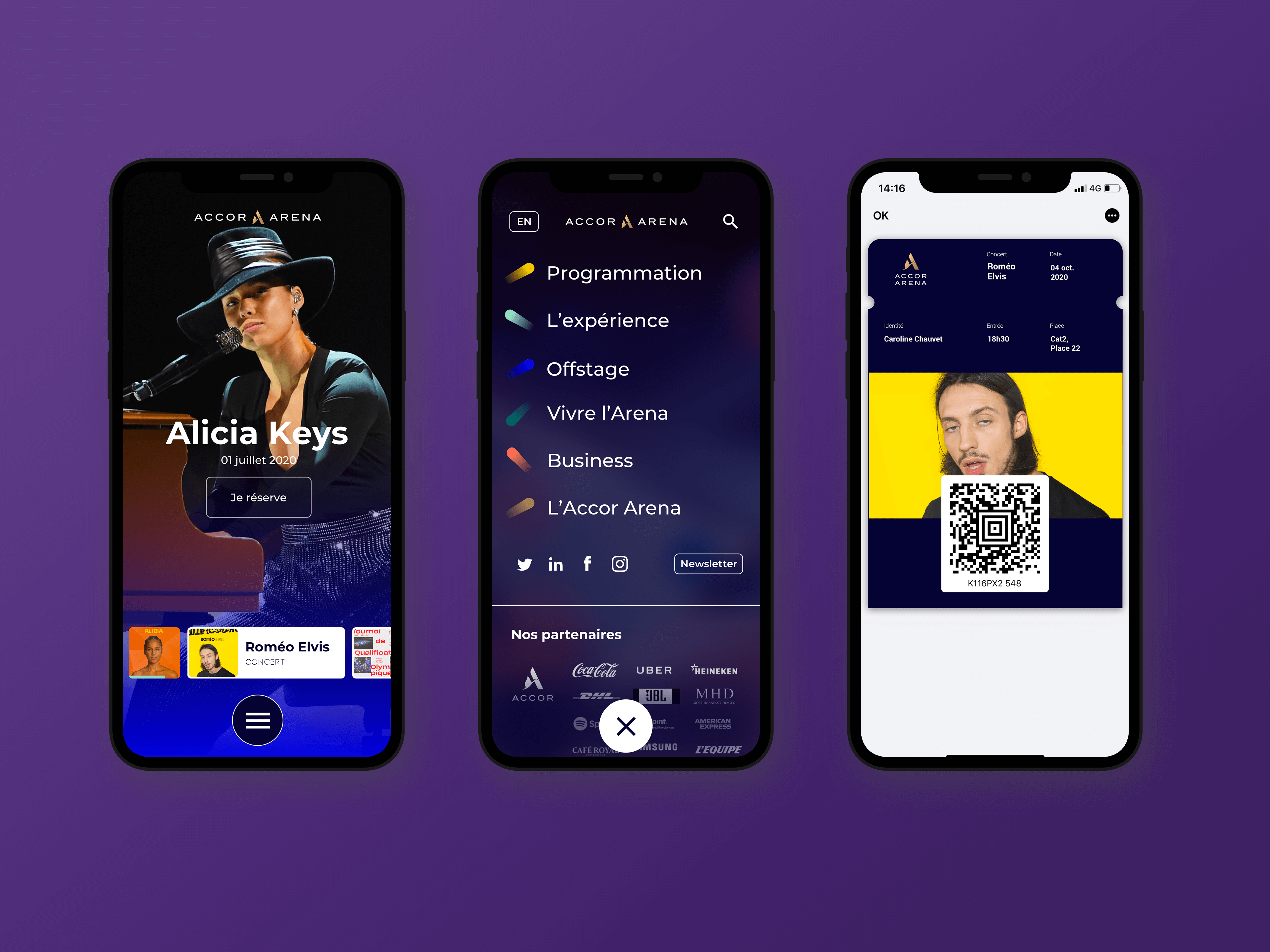
Context
The Accor Arena has a great reputation in France but does not have the necessary technological infrastructure to offer a customer experience worthy of its ambitions.
In addition, most of the ticket sales for the events are done through partners such as Fnac or TicketMaster and not on the Arena website.
The objective of this project is to rethink the digital experience of the Accor Arena and first of all the online experience, whether it is to get information, buy a ticket or find the right information to live 100% of the events.
Why this project?
I have selected this project as case study for my portfolio for several reasons
- The collaboration between designer, Accor digital team and onepoint customer experience team was very rich and helped me to see different need from each expertise. As a Designer I believe, my job was to conciliate all these needs and in the end serve the the customer
- The B2C aspect of this projet was quite interesting and challenging
- I defined the vision and main interface elements with the graphic designer
- We’ve tried to create something singular compared to the competition
- Web based platform (PWA), we had a mobile first approach
Challenges
- Understand the motivations and needs of the Arena as well as those of the users in order to propose a differentiating experience
- Conduct a comparative study quickly enough to draw inspiration from the best players in the market
- Establish a vision of the new design and get the Arena's teams on board
- Follow the project until it goes live to ensure that the strong design elements are respected while working on other issues
- Thinking of a mobile-first experience to meet current standards
My role
I was in charge of the whole user experience during this project. I participated in the first workshops with the Arena.
I then benchmarked the events sector with a graphic designer (in charge of the graphic part) and we worked hand in hand during the whole project. I then defined the main principles and convictions that served as a guideline throughout the design process.
The Process
During this project, I first conducted a series of workshops to understand the needs of the Accor Arena and users. This was followed by a phase of elaboration of convictions and main principles to guide the industrialization and the development of the platform.
The Design
Workshops
We started the project by doing a series of workshops (each workshop lasted half a day) with the Arena teams. However, it was not planned to include visitors/users of the Arena; however, it was essential for me to integrate the visitors of the Arena if we wanted to think and conceptualize the Arena experience of tomorrow.
So I contacted a panelist to recruit a dozen people for each workshop. To have a representative population, I wanted:
Workshop 1
- People who come to the Accor Arena for events
- People who go to events but not to the Accor Arena
Workshop 2
- People who buy their ticket online
- People who buy their tickets in person (box office)
- People who buy tickets for a group (family, friends etc.)
- People who regularly come to the Accor Arena for events
- People who regularly go to events but not to the Accor Arena <
The purpose of these workshops was to answer different questions
- What do you think of the Accor Arena experience? What would you like to change?
- What is the best experience you have had? (Before, during, after)
- What would be your best experience?
- What would you use the Accor Arena website for?
- How do you build visitor loyalty?
Following these workshops, we left with a lot of crucial information for the rest of the project, especially for the design of the platform.
The few key points were the following
- Facilitate access to events on the platform
- Offer a seamless end-to-end booking experience
- To have a platform that differentiates itself from other event venues in France
- Necessary functionalities (parking space reservation, etc.)
- Offer innovative services (tickets on the wallet, share the bill with others ...)
Benchmark
Then, with another designer, we started a competitive intelligence survey to get an idea of the state of the industry. Who are the major players and what experiences do they offer (e.g. Madison Square Garden, Opera House, etc.).
This benchmark has allowed us to build a repository of convictions and main principles.
Convictions & Design core interface elements
We determined 6 convictions related to the interface to guide our thinking and consequently the design phases that followed.
-
Mobile First
Design the interface for mobile use, in accordance with current analytics. -
Immersive
Let the user focus on what is most important by creating an obvious information architecture. The experience is therefore more fluid and frictionless thanks to the oneScroll. -
Reducing cognitive load
Promote immersion to create engagement. An aesthetic is more effective when it allows the user to interact with it. -
Adaptive navigation
The navigation adapts according to the screen we are in. The persistence of the menu makes it easier for visitors to have everything at their fingertips. -
learing the interface
The interface is shaped to display only the essential to increase perception and understanding. The content is more emphasized. -
Natural language
Simplify the discussion between the user and the platform by using natural language elements. To promote engagement, humanize and increase the conversion rate.
Once these convictions were defined, I started to define key interface elements to lay the first interface bricks supported by these convictions and our benchmark references.
These main principles are similar to wireframes but are mainly used to define the key elements of the interface. You can discover them below
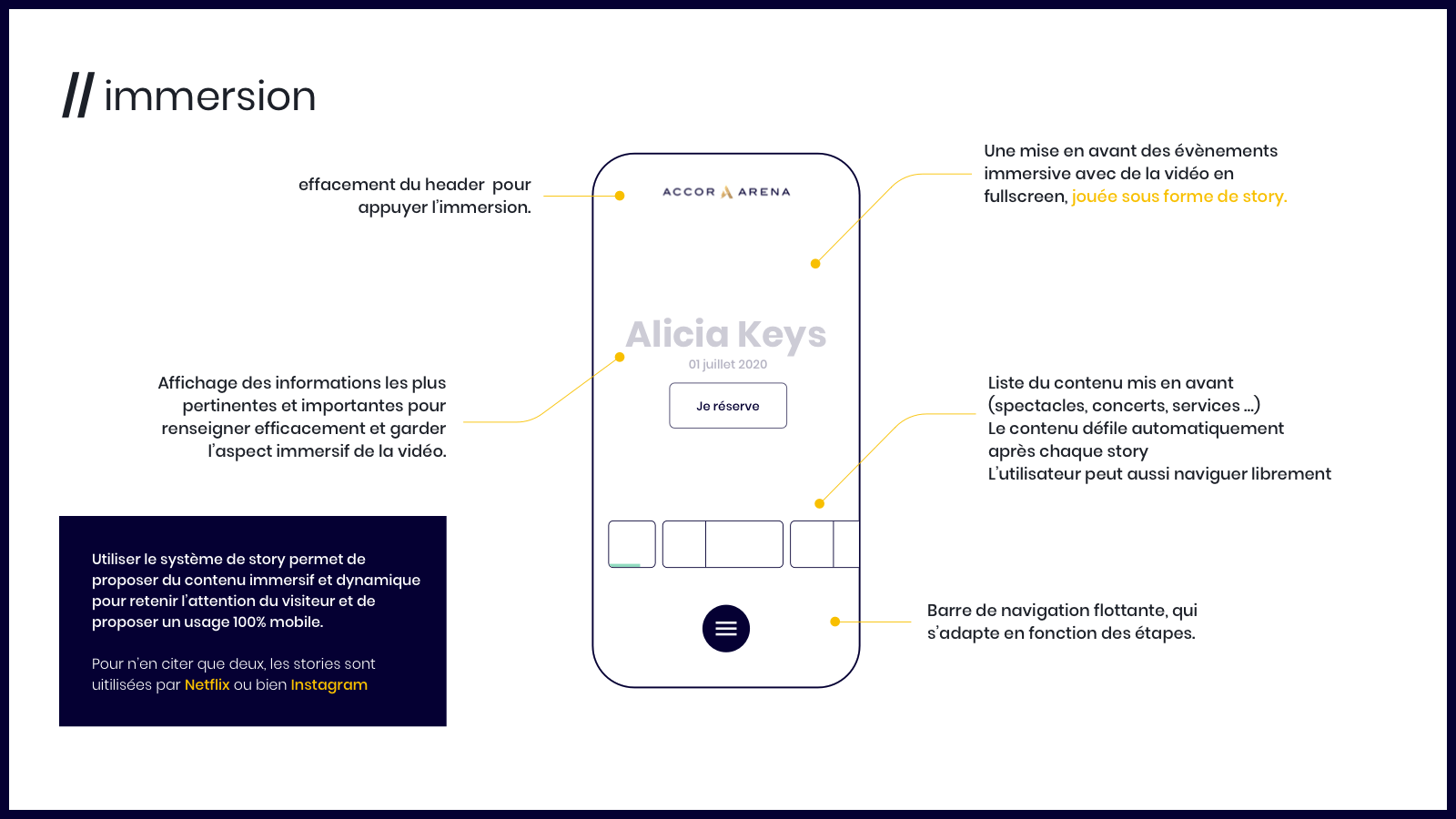
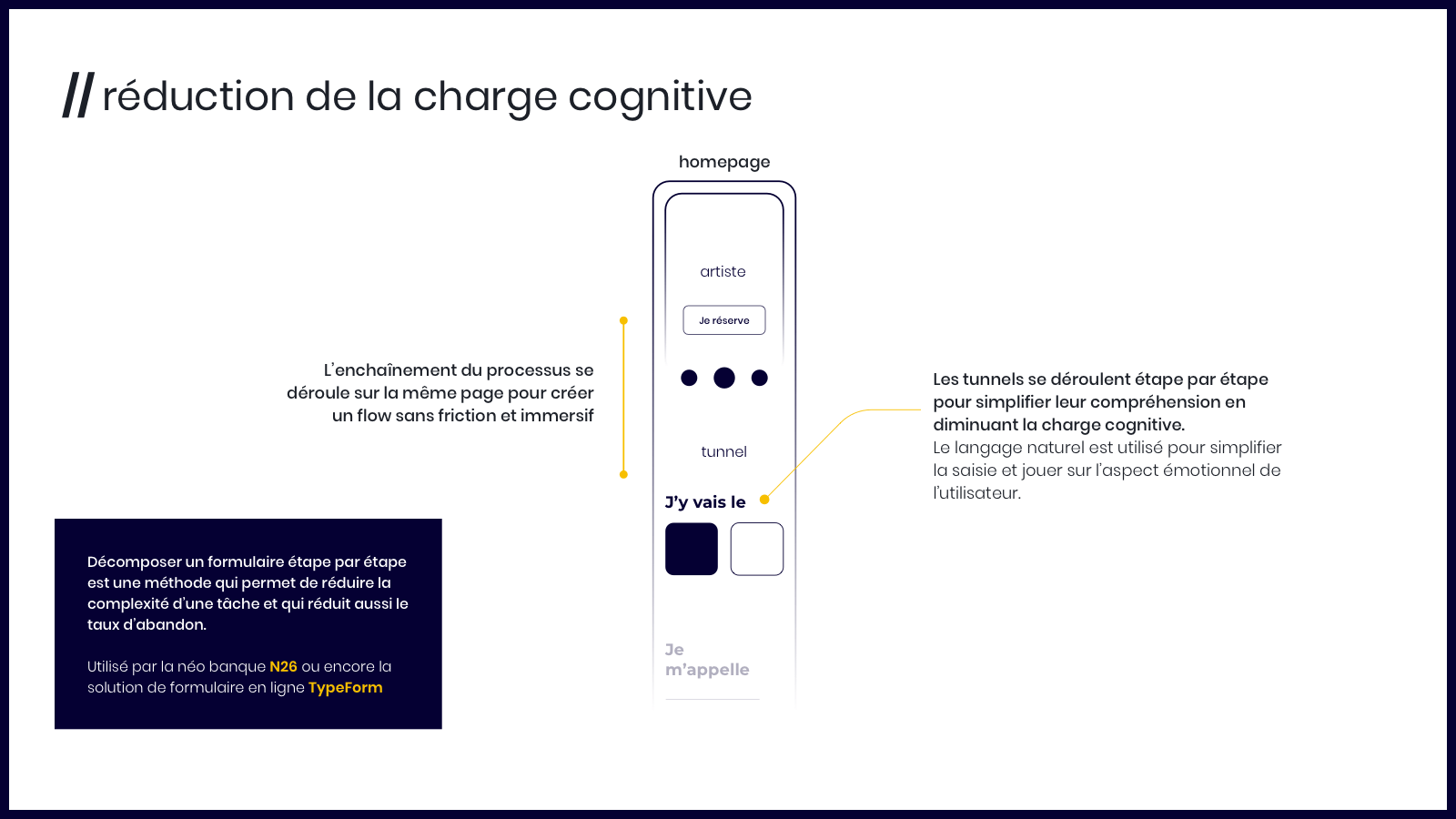
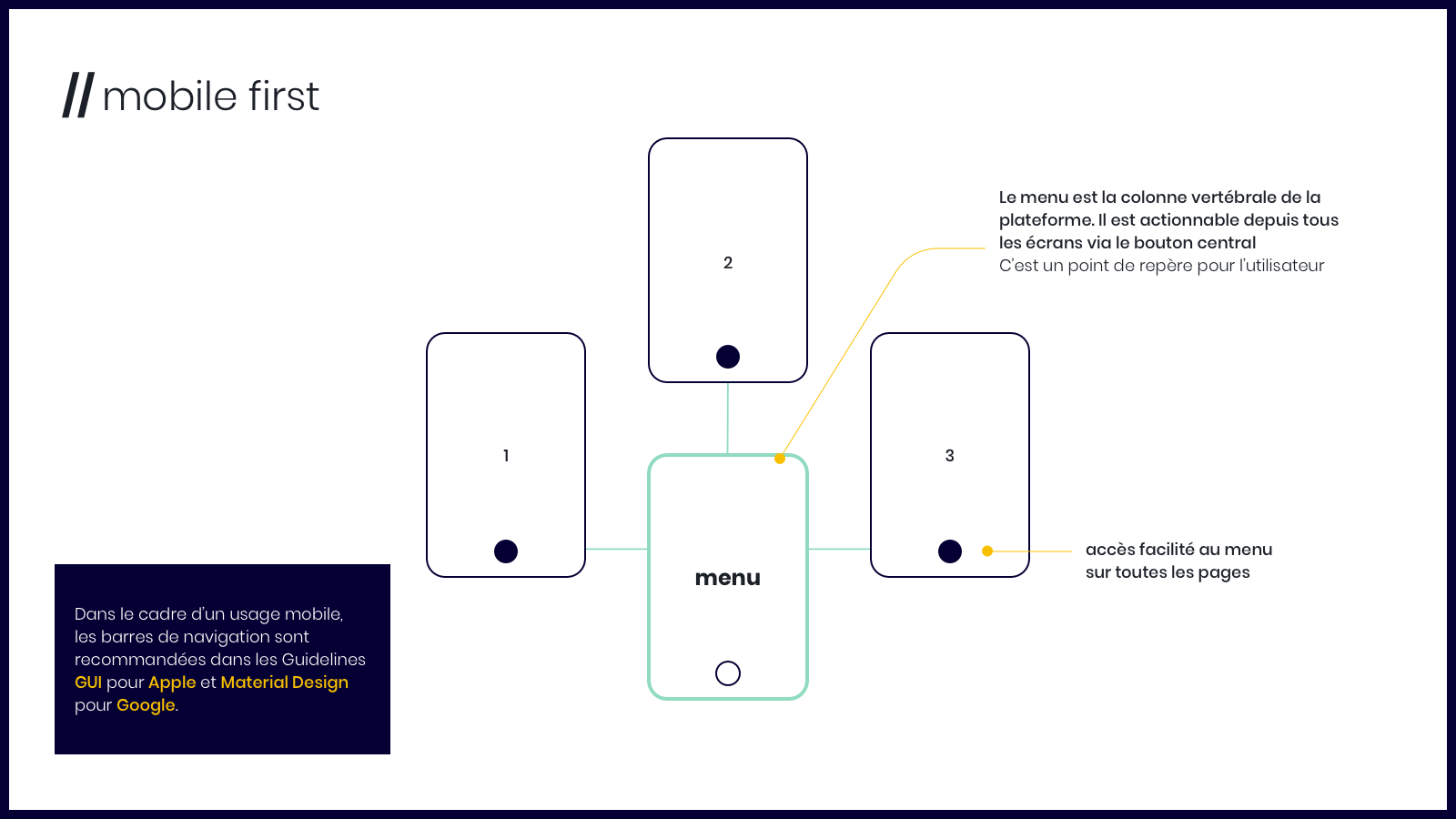
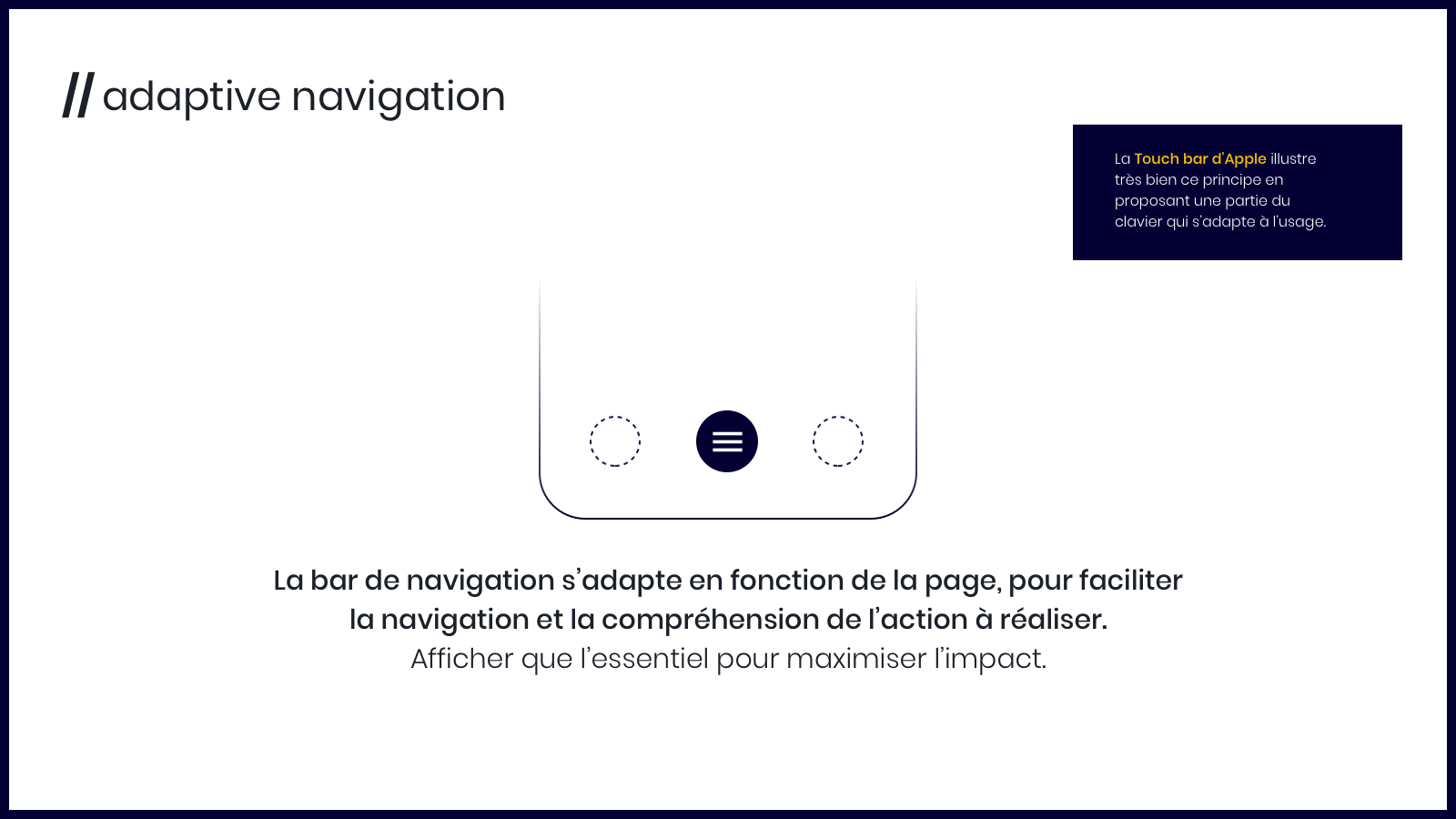

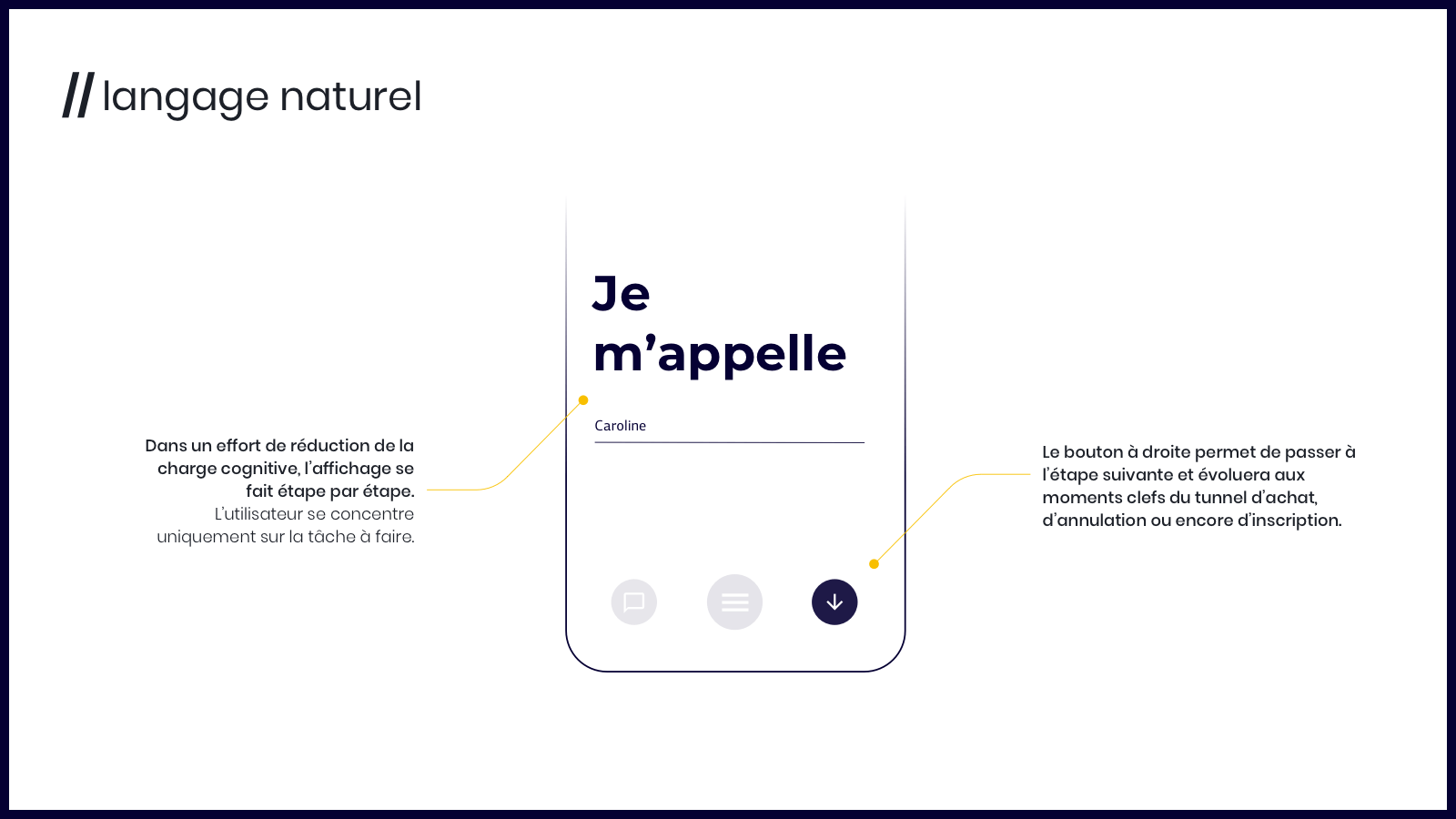
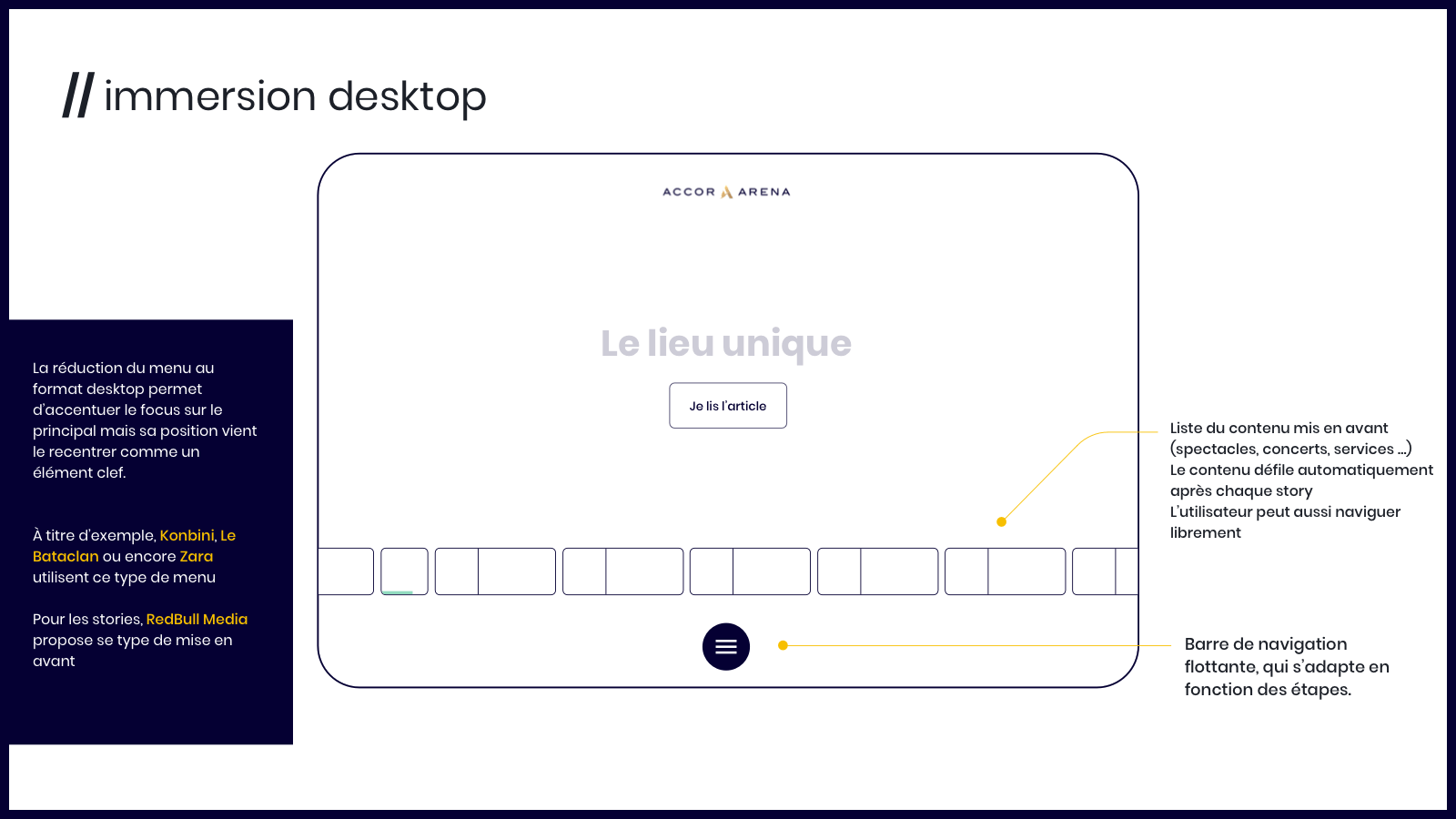

Design Concept
With the help of a graphic designer based on our convictions and major interface principles, the first concepts were born with the first user paths.
I didn't take care of the graphic design on this project but I worked with the designer in charge of this part for the argumentation of our choices.
Below are the first concepts
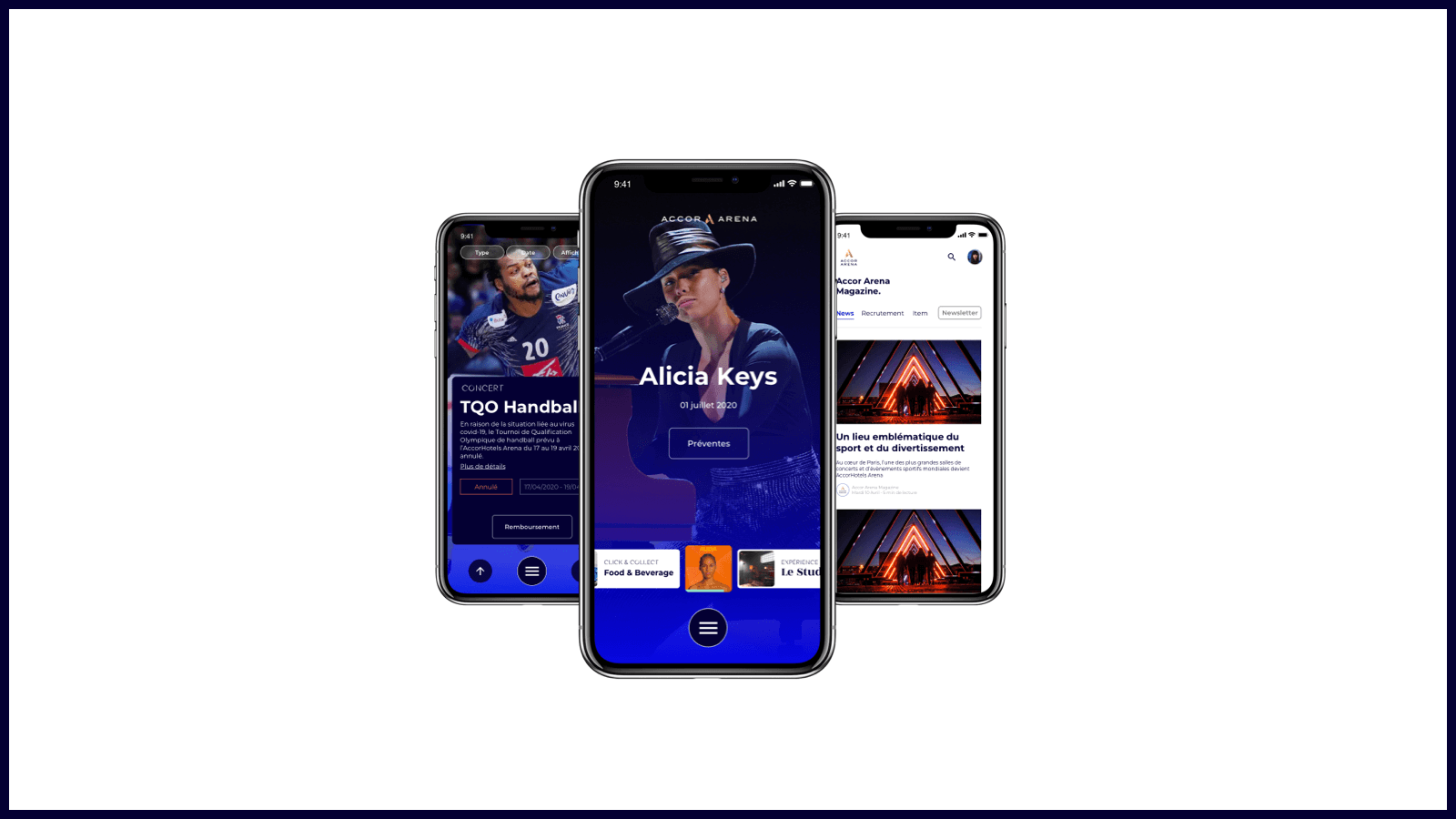
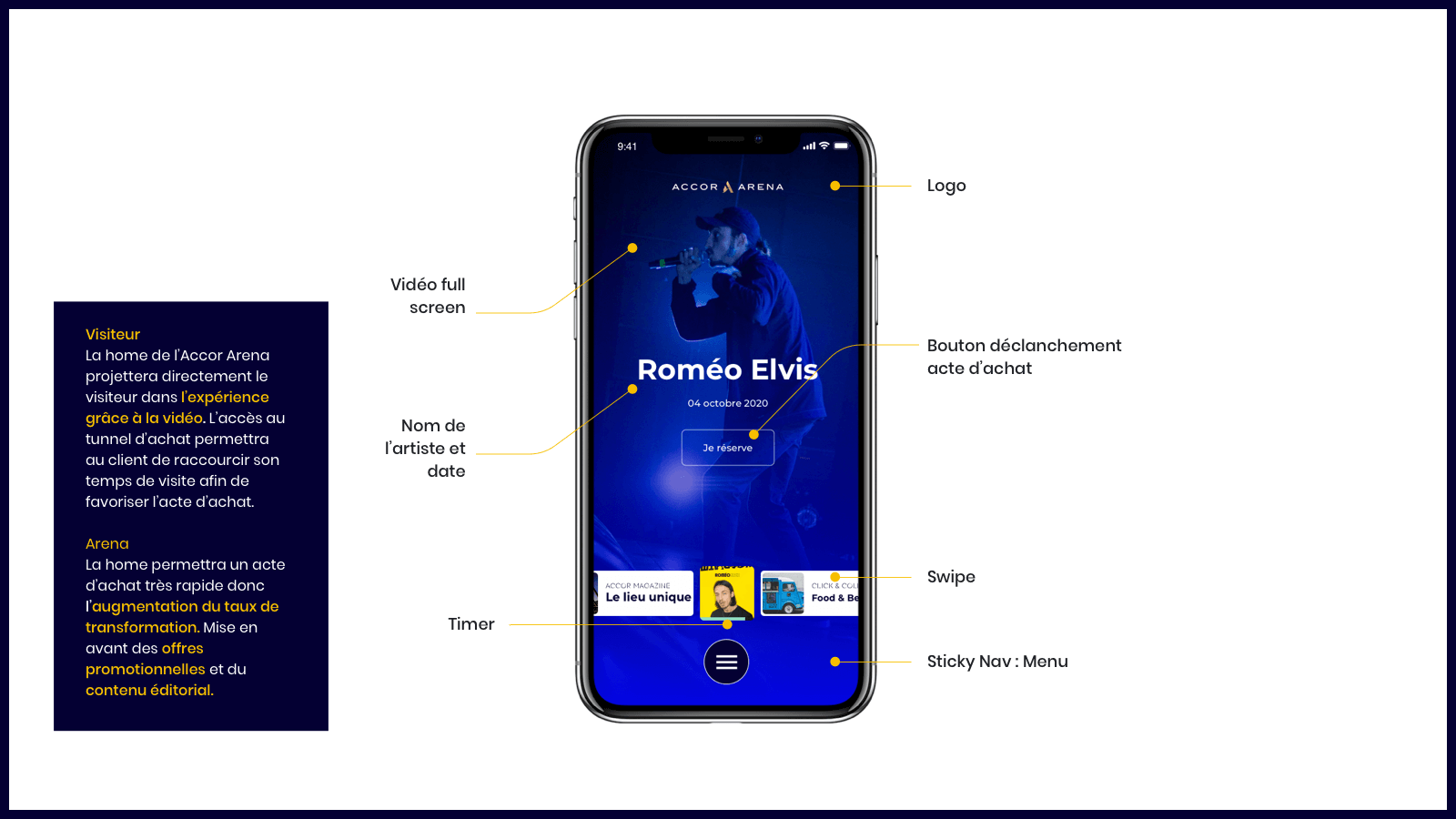
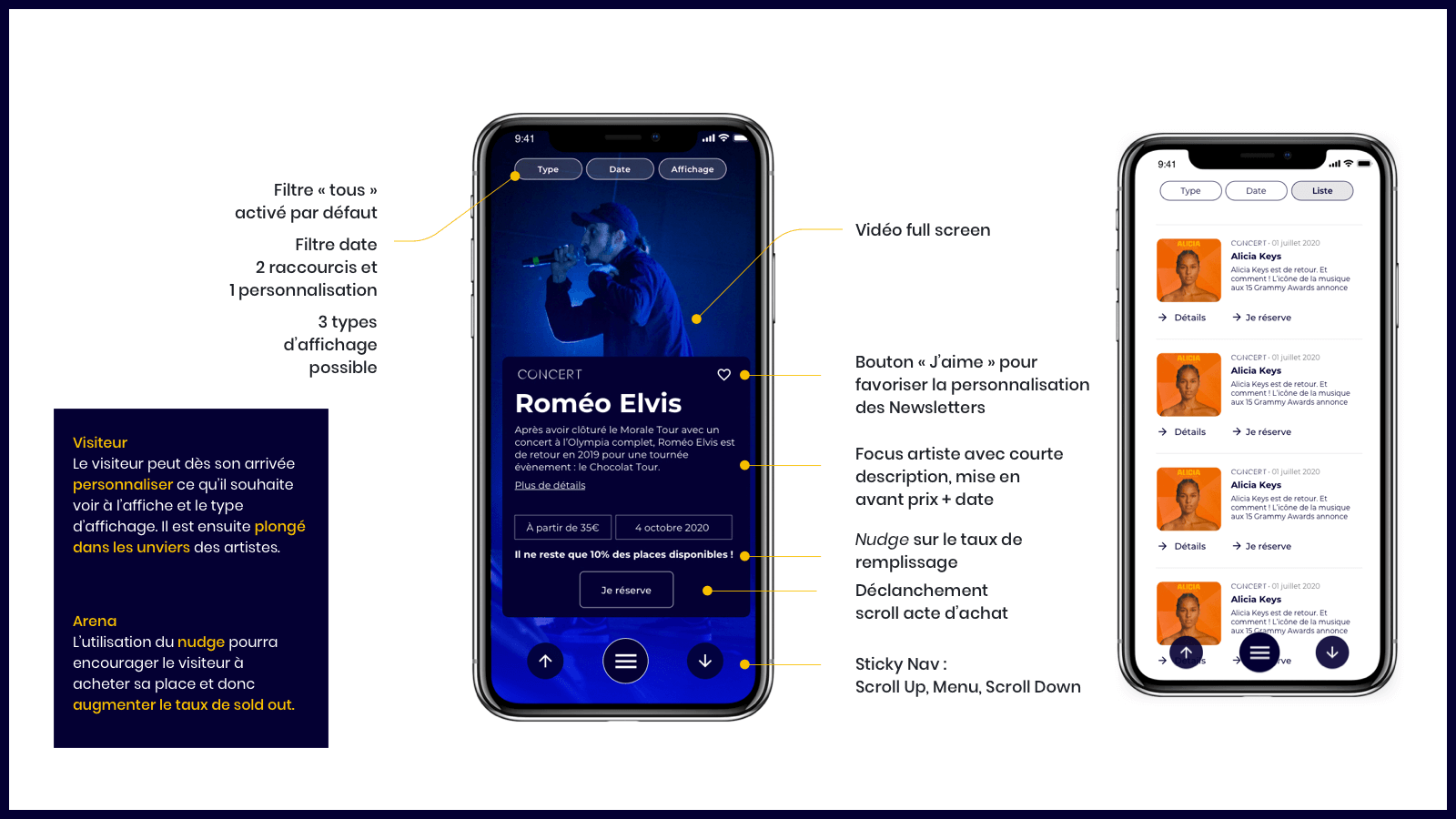
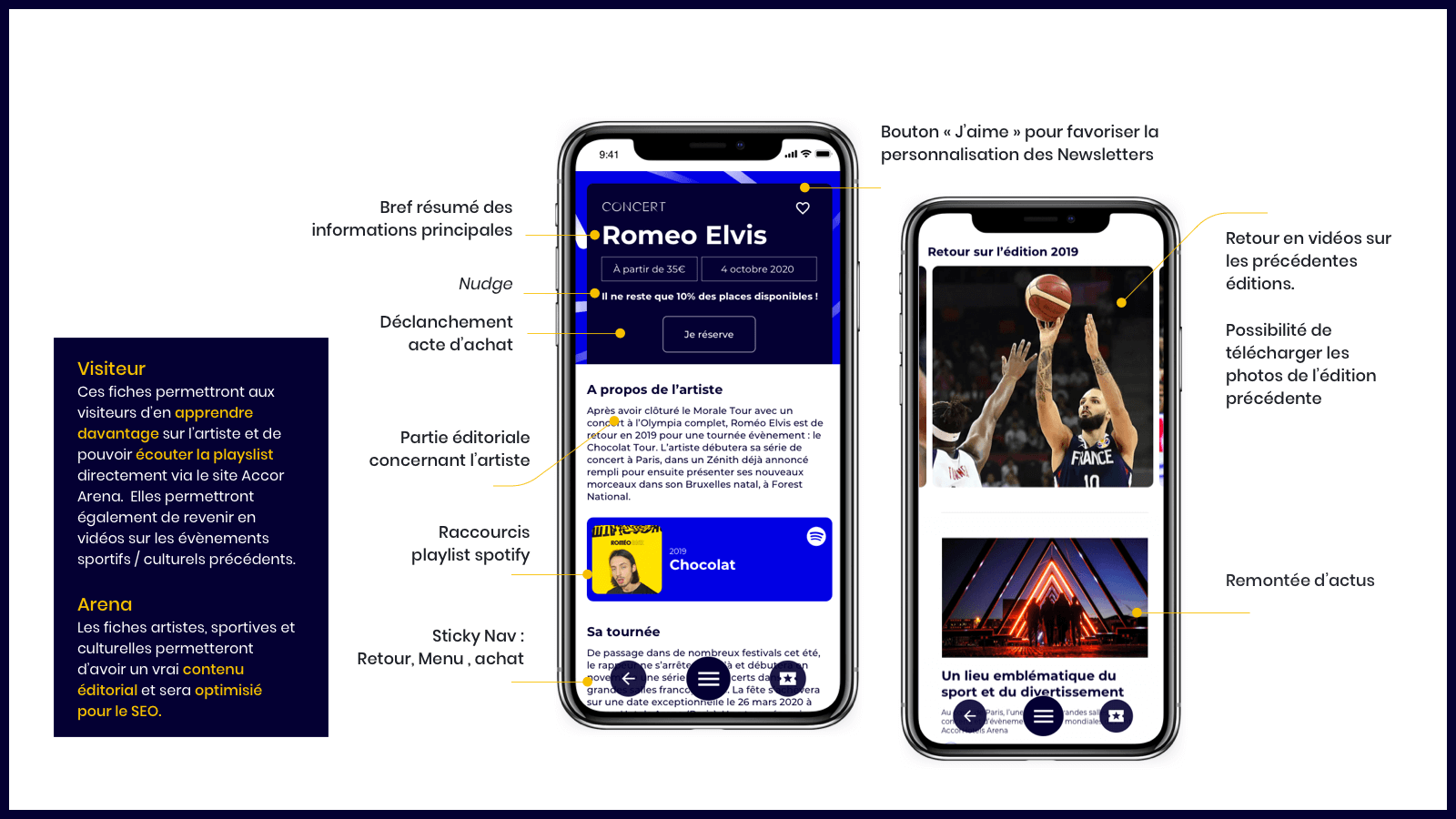
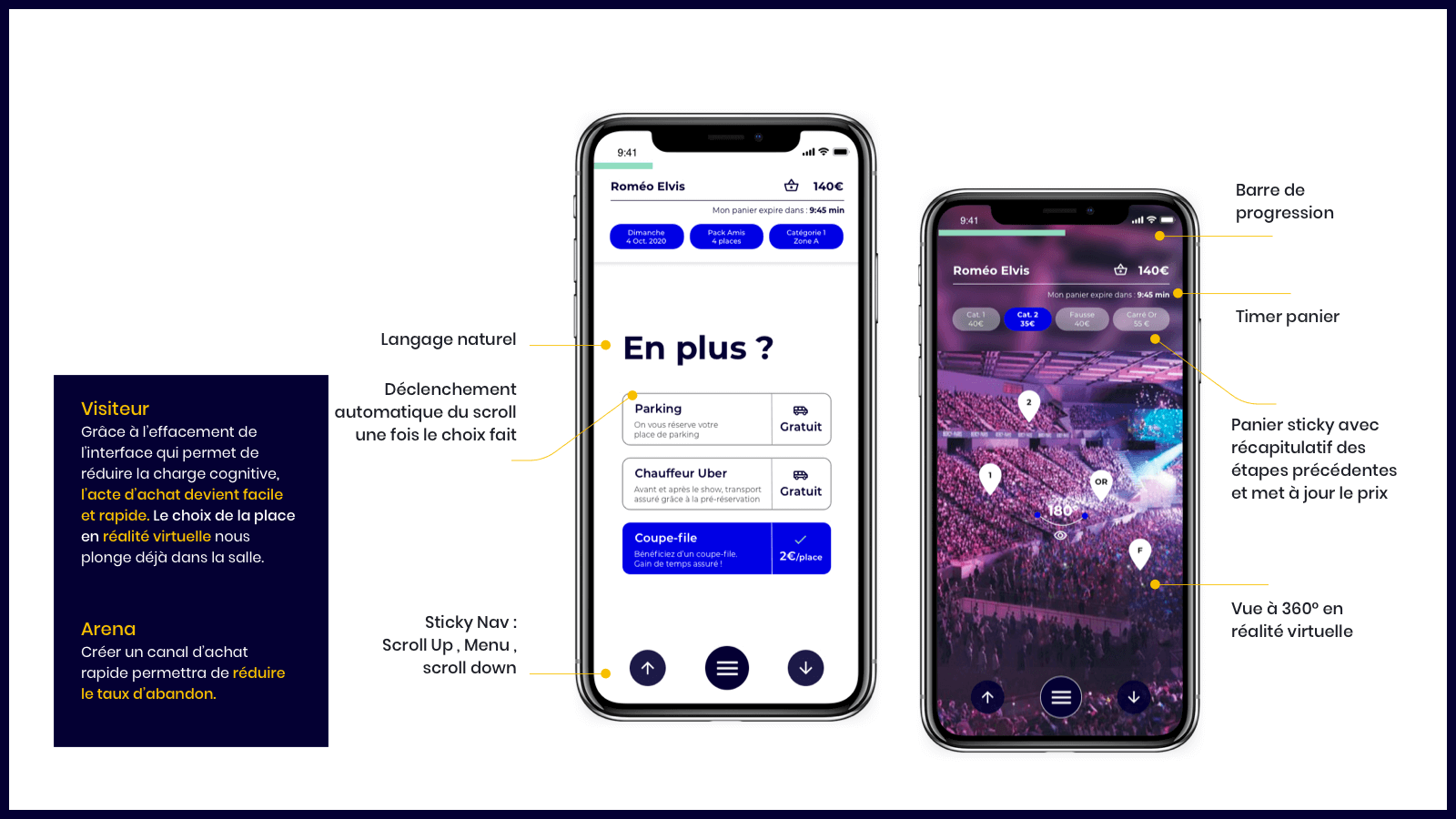
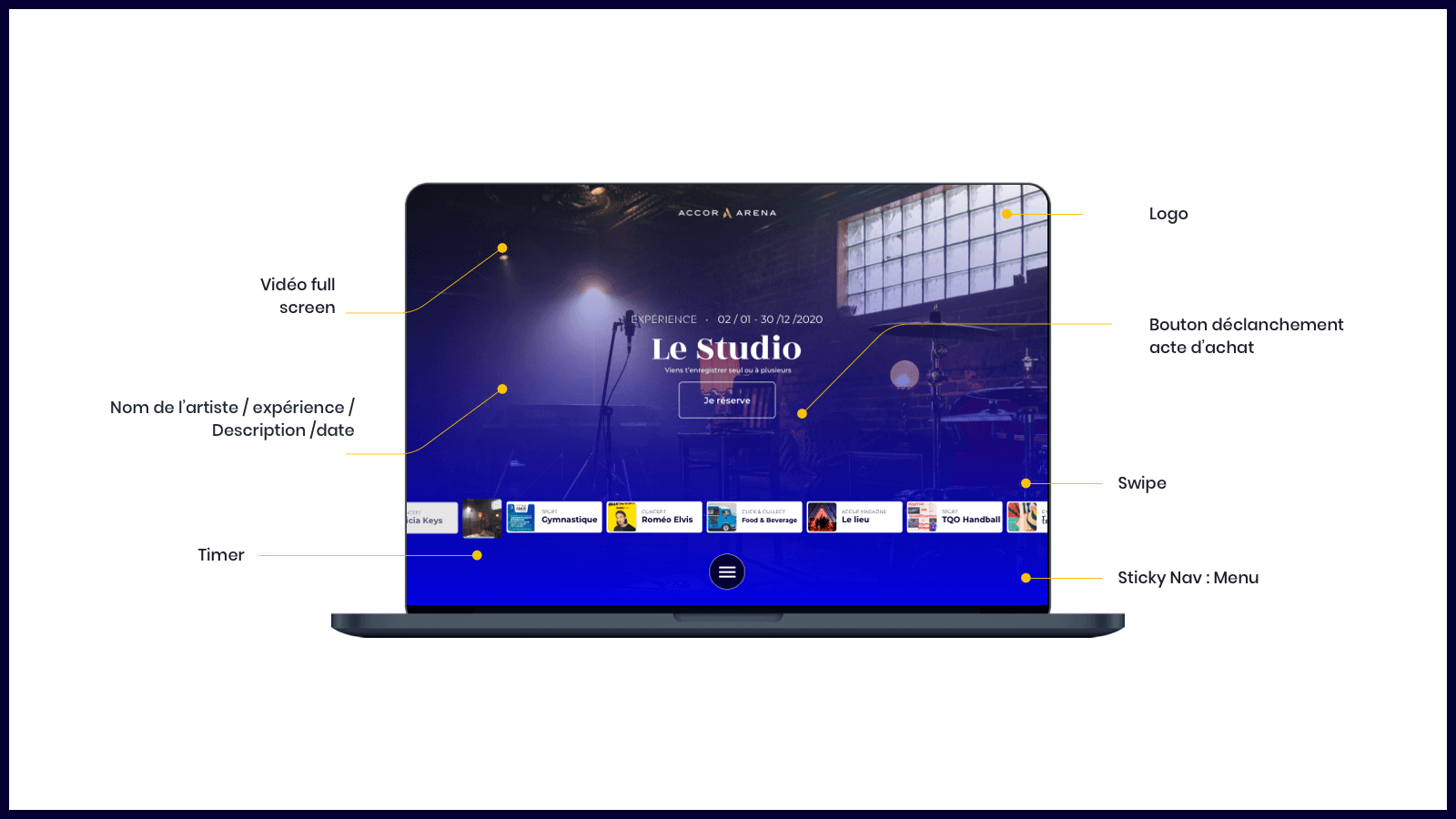
I then started to define that the interactions and animations would take on the design. We worked with a motion designer to create a video highlighting the concepts for presentation to the CEO of Accor Arena and his team.
This first phase was very well received by the teams. Our argument left no room for interpretation and convinced them without difficulty. It was the first time I worked with these methodologies but I must say that in this context, they were very effective.
Design industrialisation
The rest of the project is about the industrialization of the design and the conception of the whole interface. Unfortunately due to constraints on another project I could not intervene 100% on this part. Other people on the interface design took over. Therefore I will only talk about it very briefly and only the parts where I intervened.
I continued to follow the project but from a distance, I had to make sure that the main principles and the Atomic Design approach were respected.
However, I intervened again on the project to define all the micro interactions. I used InVision Studio to do this.
A few months later, the whole platform was thought and development had started in parallel. I continued to follow the development with the rest of the design team to collaborate with the developers and always make sure to give them the right elements to understand the functional aspect of the platform and the essence of the design.
As of September 2021, the new Accor Arena website has seen the light of day. Onepoint is still working on the integration of the booking engine part which should be launched soon. User feedback is also continuously collected to improve the platform over time.
👉 Accor Arena new websiteConclusion
Even though I wasn't involved in the entire project, I was able to really lay down the strong elements of this design and I'm very proud of it.
This approach was a great first for me, and while I think it may not always be relevant, it was in this case.
I'm also particularly proud to have worked on a platform of this scale and visibility.